We may receive a commission when you use our affiliate links. However, this does not impact our recommendations.
Looking for some help pattern routing curved shapes? Here’s a quick way to do it based on a wall-mounted dining server project by former Popular Woodworking publisher Steve Shanesy. The full project – as well as other great simple yet elegant furniture builds – also appears in the book “Contemporary Furniture: 17 Projects You Can Build,” now available from Popular Woodworking Books.
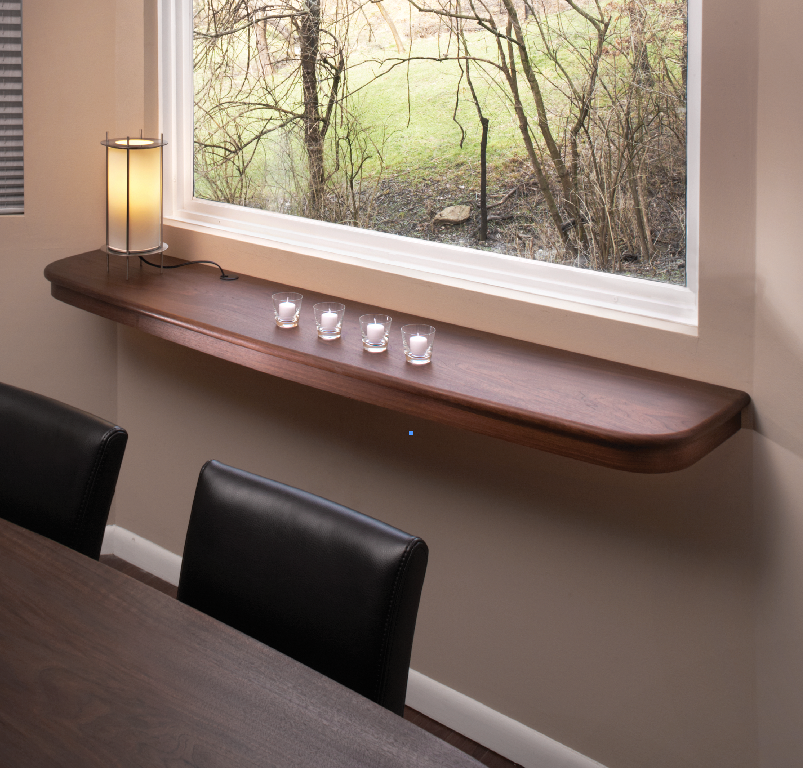
Created for a small space, this floating dining server is mounted on steel rods that are attached to the wall studs.
Except for the back edge, my dining server design has no straight lines. The front edge is a sweeping curve, the ends are a more subtle curve and the corners have a large bend to join the two. This design mirrors one edge of my dining table, so I simply used that portion of the table pattern to shape the server.
How are these fair curves generated? Pattern routing the curves is a great solution – here’s how. On a large sheet of craft paper, I found the curve I wanted for the table’s long edges by bending a narrow strip of 3⁄8″-thick plywood between fixed points. With my bending stick set to a pleasing curve, I transferred the shape to my paper.
To determine the corner radius I used trammel points and, by trial and error, found a radius that looked nice to my eye, then blended the lines into one seamless curve. Then I carefully cut the shape from the craft paper.
To make the top template, I used a piece of 1⁄4″-thick MDF. (The template needs only to be slightly more than half the server’s length.) I taped the paper to the MDF then traced the outline as shown at left above. I also marked the centers of the front and ends; these centerlines are important for aligning the template when moving it from one section of the top to the other.
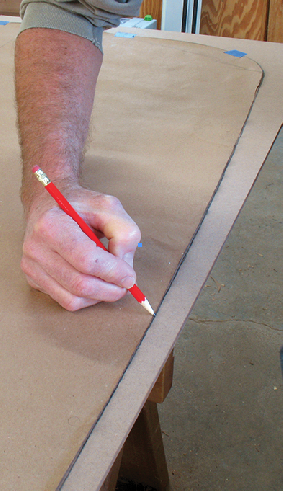
Once satisfactory curved shapes are achieved on paper, the shape is traced onto MDF to create the template.
Next, I used a jigsaw to cut the MDF at the pencil line. I took my time, knowing that any irregularities required block-sanding the edge to fair the curve. (Imperfections in the template will transfer to your finished work because the router bit bearing rides on the pattern to guide the cut.)
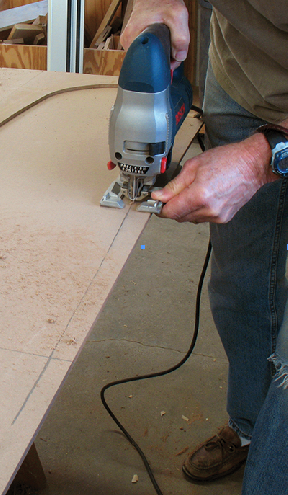
Carefully cut out the template with a jigsaw, staying tight to the line transferred from the paper.
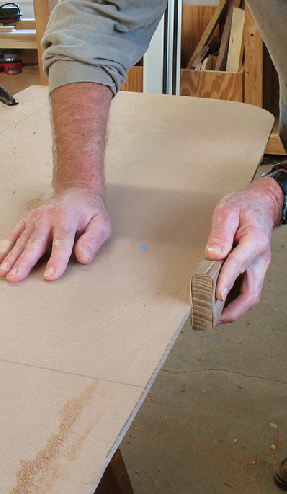
Any irregularities on the template edge are sanded smooth to ensure a fair curve.
To use the template, align the centerlines of the template with your workpiece then transfer the shape with a heavy pencil line. Using a jigsaw, cut the part staying outside the pencil mark by about 1⁄8″.
Clamp the template in place using the centerlines for accurate positioning, then use a router and pattern bit to trim to the final edge. I used a bit with a bottom-mount bearing to shape my top. (You could, instead, position your template on top of the workpiece then use a top-mounted bearing bit to trim the base unit.)
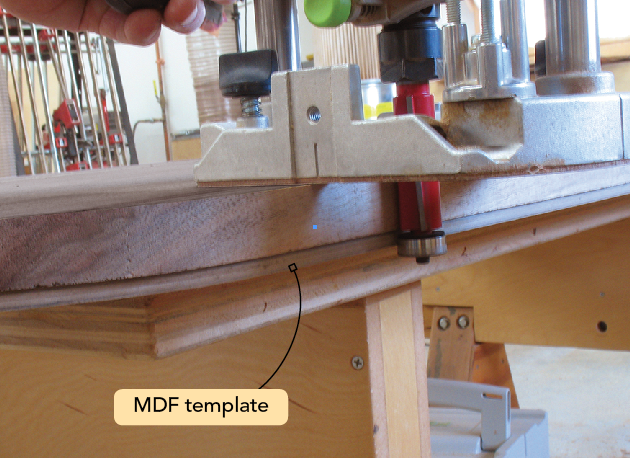
Get in shape. Jigsaw the top close to the layout lines, then clamp the template in place. Use a router and pattern router bit to trim the top to its final shape.
Though you could make the cut in a single pass, it’s better to make several light cuts until the bearing meets the template edge. Once one section of top is completed, use the centerlines to reposition the template for the next section.
 For more contemporary furniture ideas and projects check out “Contemporary Furniture: 17 Projects You Can Build,” now available at ShopWoodworking.com.
For more contemporary furniture ideas and projects check out “Contemporary Furniture: 17 Projects You Can Build,” now available at ShopWoodworking.com.
Here are some supplies and tools we find essential in our everyday work around the shop. We may receive a commission from sales referred by our links; however, we have carefully selected these products for their usefulness and quality.






![Pattern Routing Tips [Video]](https://dev.popularwoodworking.com/wp-content/uploads/bfi_thumb/dummy-transparent-olcy6s63it1p9yp7uhusjas7c8kahafrhg9su7q9i0.png)

